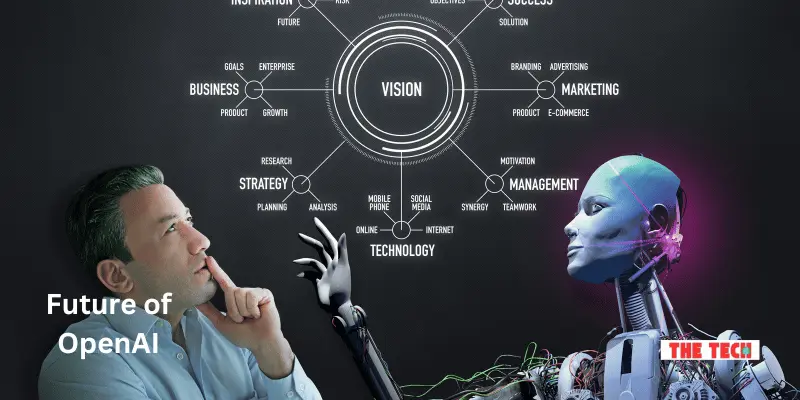OpenAI Stakeholders – Who’s Behind the AI Magic?
Published: December 31, 2024
Want to know about openAI stakeholders? Let’s start. When you hear about OpenAI and its amazing tools like ChatGPT, have you ever stopped to think about who’s behind it all?
Who makes it possible for OpenAI to create and grow? That’s where the concept of stakeholders comes in.
Simply put, stakeholders are the people and groups who are connected to OpenAI and help shape its journey.
In this blog, we’ll explore the different stakeholders involved, their roles, key investments, and even take a glimpse into OpenAI’s exciting future.
Explore OpenAI Stakeholders

Think of stakeholders as anyone who has a part to play in OpenAI’s story. They can be individuals, teams, or organisations.
Whether they’re creating AI models, funding projects, or using OpenAI’s tools, stakeholders contribute to OpenAI’s success and growth.
OpenAI’s stakeholders include its founders, investors, researchers, users, and collaborators. Each group plays a unique and essential role in shaping its path.
Types of OpenAI Stakeholders
Let’s take a deeper look at the people and groups that make OpenAI’s success possible:
Founders and Leadership
OpenAI was founded in 2015 by a team of visionaries, including Elon Musk, Sam Altman, Greg Brockman, Wojciech Zaremba, Ilya Sutskever, John Schulman, and others.
While Elon Musk stepped back from an active role in 2018.
The leadership team, including Sam Altman (CEO), continues to guide OpenAI’s mission to create safe and powerful AI for the world.
Major Investor: Microsoft
OpenAI’s journey wouldn’t have been possible without significant financial backing. Key investors include:
- Microsoft: In 2019, Microsoft invested $1 billion in OpenAI, marking a major milestone. This partnership allowed OpenAI to leverage Microsoft’s Azure platform for training large-scale AI models.
- Other Funding Sources: OpenAI raised $300 million in a funding round in 2023, valuing the company at approximately $29 billion. Venture capital firms such as Tiger Global, Andreessen Horowitz, and Thrive Capital have also played a critical role in its growth.
Microsoft now:
- Provides cloud computing power via Azure.
- Integrates OpenAI’s models into its products, including Bing Chat and Microsoft Copilot.
- Has exclusive rights to license OpenAI’s GPT models.
These investments fuel research, development, and the infrastructure needed for AI advancements
Employees and Researchers
Behind every great innovation are the hardworking people who make it happen.
OpenAI’s team consists of top-tier AI researchers, engineers, and developers dedicated to pushing the boundaries of what’s possible with AI.
They are the minds behind revolutionary tools like GPT models, DALL-E, and Codex.
Users and Customers
You, the users, are one of OpenAI’s most important stakeholders. Millions of people use tools like ChatGPT for learning, productivity, and creativity.
Your feedback helps OpenAI improve its offerings and shape future developments.
Collaborators and Partners
OpenAI collaborates with a variety of partners to expand the reach and impact of its AI technologies.
Its partnership with Microsoft has been particularly significant, enabling the integration of AI into tools like Azure OpenAI Service and products like GitHub Copilot..
Why Stakeholders Matter
Here are some key points, why stackholders matter:
- Stakeholders are at the heart of OpenAI’s operations.
- Founders and investors ensure the organization has the vision and resources to succeed.
- Researchers and employees drive innovation and development.
- Users and collaborators help refine the technology and make it widely accessible.
This ecosystem creates a balance that keeps OpenAI aligned with its mission of ensuring AI benefits everyone
Related Investments
OpenAI has seen significant investments to power its ambitious projects. Some key highlights include:
- Microsoft’s $1 billion investment: A strategic move that enabled OpenAI to scale its operations and infrastructure.
- $300 million funding round in 2023: With participation from major firms like Tiger Global, Andreessen Horowitz, and Thrive Capital.
- Private donors and philanthropists: Supporting ethical and groundbreaking AI research.
These funds support the training of advanced models, ethical AI practices, and scaling operations to meet growing demand
The Future of OpenAI

The future of OpenAI is incredibly promising. With continued advancements in AI, OpenAI is likely to:
- Expand Accessibility: Making AI tools more user-friendly and available to individuals and businesses worldwide.
- Drive Innovation: Developing even more powerful models to assist in diverse fields like education, healthcare, and climate research.
- Focus on Safety: Strengthening its commitment to ethical and responsible AI development.
- OpenAI’s goal remains clear: to ensure that AI benefits all of humanity.
Conclusion
OpenAI’s success story is the result of collaboration among visionaries, investors, researchers, users, and partners.
Stakeholders like Microsoft, venture capital firms, and its talented team have made it possible for OpenAI to lead in the world of AI innovation.
As OpenAI continues to grow, its commitment to ethical and accessible AI promises an exciting future filled with groundbreaking advancements.
From revolutionizing industries to empowering individuals, OpenAI is set to change the way we interact with technology.
Want to stay updated with OpenAI’s journey or explore how their tools can help you? Visit OpenAI’s website and join the conversation.
FAQs
OpenAI was founded by Sam Altman, Greg Brockman, Wojciech Zaremba, Ilya Sutskever, John Schulman, and Elon Musk (who later stepped back from an active role).
Microsoft invested $1 billion in OpenAI to support its research, development, and infrastructure. This partnership also integrates OpenAI’s tools into Microsoft’s Azure platform and products like GitHub Copilot.
OpenAI is funded through a mix of investments from companies like Microsoft, venture capital firms such as Tiger Global and Andreessen Horowitz, and private donors.
Users play a critical role by providing feedback and using OpenAI’s tools. This helps the company refine its offerings and create user-friendly products.
The funding supports research, AI model training, infrastructure development, safety measures, and expanding access to OpenAI’s tools.
OpenAI has a strong commitment to AI safety. It collaborates with governments, organizations, and researchers to ensure its AI models are responsibly developed and deployed.
OpenAI’s tools are designed to benefit everyone—from individual users to businesses and researchers in fields like education, healthcare, and climate science.
OpenAI offers cutting-edge AI tools like ChatGPT, DALL-E, Codex, and integrations with platforms like Microsoft Azure.
OpenAI aims to expand accessibility, drive AI innovation, and focus on safety to ensure that AI benefits all of humanity.
You can visit OpenAI’s official website to stay updated on its projects, collaborations, and innovations.
Bonus Info
- OpenAI’s Non-Profit Origins: OpenAI was initially founded as a non-profit organization with the goal of advancing artificial intelligence in a way that benefits humanity. Over time, it transitioned to a “capped-profit” model to attract more investment while still maintaining its ethical stance on AI development.
- OpenAI’s Collaboration with Government Bodies: OpenAI collaborates with various governments and international organizations to help set global standards for AI ethics and safety. This includes participating in AI safety research and advocating for policy frameworks that ensure AI is developed responsibly.
- OpenAI’s Unique “Capped-Profit” Model: OpenAI’s unique business structure involves a capped-profit model. This means that investors and employees can earn returns on their investments, but those returns are limited in order to prioritize the mission of ensuring AI is used for the greater good.
- The Role of Microsoft’s Azure Platform: OpenAI relies heavily on Microsoft’s Azure cloud platform to train its massive AI models. Azure provides the computing power necessary to run large-scale AI experiments and ensures OpenAI can scale its models effectively and securely.
- How OpenAI’s AI Tools Are Shaping Different Industries: OpenAI’s tools, such as ChatGPT and DALL-E, are already having a significant impact across industries. For example, GPT-3 is being used in customer service, content creation, and education, while DALL-E is revolutionizing the way art and design are created, providing innovative tools for creators and businesses.

- Be Respectful
- Stay Relevant
- Stay Positive
- True Feedback
- Encourage Discussion
- Avoid Spamming
- No Fake News
- Don't Copy-Paste
- No Personal Attacks



- Be Respectful
- Stay Relevant
- Stay Positive
- True Feedback
- Encourage Discussion
- Avoid Spamming
- No Fake News
- Don't Copy-Paste
- No Personal Attacks





